Reduced Graphene Oxide Filtration Membranes for Dye Removal—Production and Characterization †
Abstract
:1. Introduction
2. Materials and Methods
2.1. Preparation of GO and rGO Dispersions
2.2. Preparation of rGO Filtration Membranes
2.3. Characterization
2.4. Evaluation of Dye Removal
3. Results and Discussion
3.1. rGO Dispersion Characterization
3.2. rGO Filtration Membranes Characterization
3.3. Dye Removal Evaluation
4. Conclusions
- (i)
- The rGO dispersion was successfully produced and has lateral size and properties suitable for an application as a filtration membrane;
- (ii)
- The spray coating method produced uniform and stable rGO membranes;
- (iii)
- The permeation test proves that rGO filtration membranes can be used to eliminate dyes from manufacturing and textile industry wastewater as a simple, low-cost and scalable method.
Author Contributions
Funding
Acknowledgments
Conflicts of Interest
References
- Yan, X.; Tao, W.; Cheng, S.; Ma, C.; Zhang, Y.; Sun, Y.; Kong, X. Layer-by-layer assembly of bio-inspired borate/graphene oxide membranes for dye removal. Chemosphere 2020, 256, 127118–127127. [Google Scholar] [CrossRef]
- Ariaeenejad, S.; Motamedi, E.; Salekdeh, G.H. Application of the immobilized enzyme on magnetic graphene oxide nano-carrier as a versatile bi-functional tool for efficient removal of dye from water. Bioresour. Technol. 2021, 319, 124228–124237. [Google Scholar] [CrossRef]
- Zhu, M.; Liu, Y.; Chen, M.; Gan, D.; Wang, M.; Zeng, H.; Liao, M.; Chen, J.; Tu, W.; Niu, W. Ultrahigh flux of graphene oxide membrane modified with orientated growth of MOFs for rejection of dyes and oil-water separation. Chin. Chem. Lett. 2020. [Google Scholar] [CrossRef]
- Hou, J.; Chen, Y.; Shi, W.; Bao, C.; Hu, X. Graphene oxide/methylene blue composite membrane for dyes separation: Formation mechanism and separation performance. Appl. Surf. Sci. 2020, 505, 144145–144157. [Google Scholar] [CrossRef]
- Lin, C.; Tung, K.; Lin, Y.; Dong, C.; Chen, C.; Wu, C. Fabrication and modification of forward osmosis membranes by using graphene oxide for dye rejection and sludge concentration. Process. Saf. Environ. 2020, 144, 225–235. [Google Scholar] [CrossRef]
- Sundaran, S.P.; Reshmi, C.R.; Sagitha, P.; Manaf, O.; Sujith, A. Multifunctional graphene oxide loaded nanofibrous membrane for removal of dyes and coliform from water. J. Environ. Manag. 2019, 240, 494–503. [Google Scholar] [CrossRef]
- Vantanpour, V.; Khadem, S.S.M.; Dehqan, A.; Al-Naqshabandi, M.A.; Ganjali, M.R.; Hassani, S.S.; Rashid, M.R.; Saeb, M.R.; Dizge, N. Efficient removal of dyes and proteins by nitrogen-doped porous graphene blended polyethersulfone nanocomposite membranes. Chemosphere 2020, 263, 127892–127902. [Google Scholar] [CrossRef]
- Zeng, H.; Yu, Z.; Shao, L.; Li, X.; Zhu, M.; Liu, Y.; Feng, X.; Zhu, X. Ag2CO3@UiO-66-NH2 embedding graphene oxide sheets photocatalytic membrane for enhancing the removal performance of Cr(VI) and dyes based on filtration. Desalination 2020, 491, 114558–114569. [Google Scholar] [CrossRef]
- Sheng, J.; Yin, H.; Qian, F.; Huang, H.; Gao, S.; Wang, J. Reduced graphene oxide-based composite membranes for in-situ catalytic oxidation of sulfamethoxazole operated in membrane filtration. Sep. Purif. Technol. 2020, 236, 116275–116284. [Google Scholar] [CrossRef]
- Faria, G.S.; Lima, A.M.; Brandão, L.P.; Costa, A.P.; Nardecchia, S.; Ribeiro, A.A.; Pinheiro, W.A. produção e caracterização de óxido de grafeno e óxido de grafeno reduzido com diferentes tempos de oxidação. Rev. Matéria. 2017, 22, e11918. [Google Scholar] [CrossRef]
- Rourke, J.P.; Pandey, P.A.; Moore, J.J.; Bates, M.; Kinloch, I.A.; Young, R.J.; Wilson, N.R. The real graphene oxide revealed: Stripping the oxidative debris from the graphene-like sheets. Angew. Chem. Int. Ed. 2011, 50, 3173–3177. [Google Scholar] [CrossRef]
- Ma, J.; Tang, X.; He, Y.; Fan, Y.; Chen, J.; HaoYu. Robust stable MoS2/GO filtration membrane for effective removal of dyes and salts from water with enhanced permeability. Desalination 2020, 480, 114328–114338. [Google Scholar] [CrossRef]
- Pruna, A.; Pullini, D.; Busquets, D. Influence os synthesis conditions on properties of green-reduced graphene oxide. J. Nanopart. Res. 2013, 15, 1605–1616. [Google Scholar] [CrossRef]
- Tung, T.T.; Alotaibi, F.; Nine, M.J.; Silva, R.; Tran, D.N.; Janowska, I.; Losic, D. Engineering of highly conductive and ultra-thin nitrogen-doped graphene films by combined methods of microwave irradiation, ultrasonic spraying and thermal annealing. Chem. Eng. J. 2018, 338, 764–773. [Google Scholar] [CrossRef]
- Xu, H.; Ma, L.; Jin, Z. Nitrogen-doped graphene: Synthesis, characterizations and energy applications. J. Energy Chem. 2018, 27, 146–160. [Google Scholar] [CrossRef]
- Gogoi, A.; Konch, T.J.; Raidongia, K.; Reddy, K.A. Water and salt dynamics in multilayer graphene oxide (GO) membrane: Role of lateral sheet dimensions. J. Membr. Sci. 2018, 563, 785–793. [Google Scholar] [CrossRef]
- Li, J.; Hu, M.; Pei, H.; Ma, X.; Yan, F.; Dlamini, D.S.; Cui, Z.; He, B.; Li, J.; Matsuyama, H. Improved water permeability and structural stability in a polysulfone-grafted oxide composite membrane used for dye separation. J. Membr. Sci. 2020, 595, 117547–117558. [Google Scholar] [CrossRef]
- Zhang, R.; Ma, Y.; Lan, W.; Sameen, D.; Ahmed, S.; Dai, J.; Qin, W.; Li, S.; Liu, Y. Enhanced photocatalytic degradation of organic dyes by ultrasonic-assisted electrospray TiO2/Graphene oxide on polyacrylonitrile/β-cyclodextrin nanofibrous membranes. Ultrason. Sonochem. 2021, 70, 105343–105361. [Google Scholar] [CrossRef]
- Hassanpour, A.; Nahar, S.; Tong, X.; Zhang, G.; Gauthier, M.A.; Sun, S. Photocatalytic interlayer spacing adjustment of a graphene oxide/zinc oxide hybrid membrane for efficient water filtration. Desalination 2020, 475, 114174–114182. [Google Scholar] [CrossRef]
- Fan, X.; Cai, C.; Gao, J.; Han, X.; Li, J. Hydrothermal reduced graphene oxide membranes for dyes removing. Sep. Purif. Technol. 2020, 241, 116730–116738. [Google Scholar] [CrossRef]
- Homem, N.C.; Beluci, N.C.L.; Amorim, S.; Reis, R.; Vieira, A.M.S.; Vieira, M.F.; Bergamasco, R.; Amorim, M.T.P. Surface modification of a polyethersulfone microfiltration membrane with graphene oxide for reactive dyes removal. Appl. Surf. Sci. 2019, 486, 499–507. [Google Scholar] [CrossRef]
- Liu, P.; Zhu, C.; Mathew, A.P. Mechanically robust high flux graphene oxide—Nanocellulose membranes for dye removal from water. J. Hazard. Mater. 2019, 371, 484–493. [Google Scholar] [CrossRef] [PubMed]
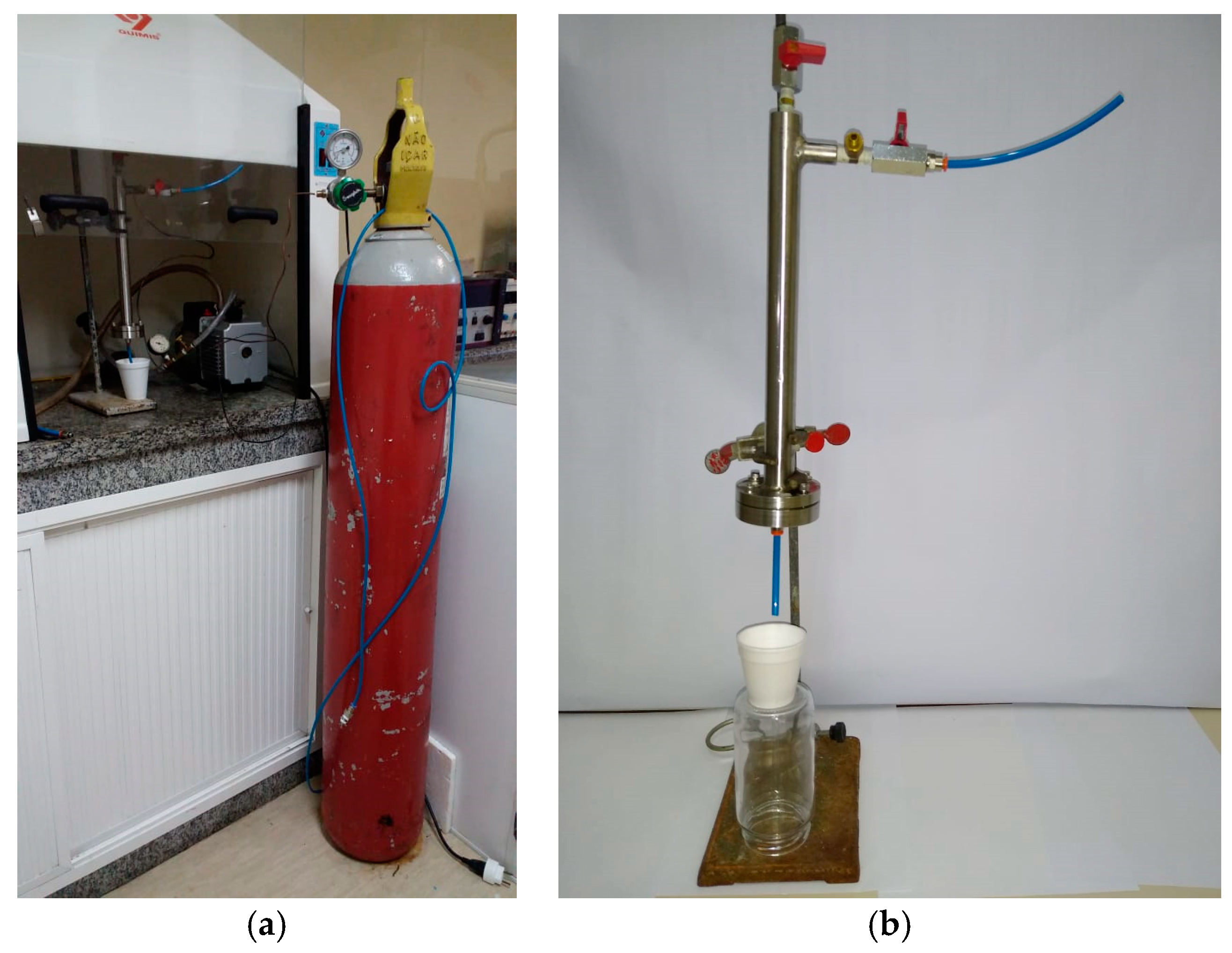

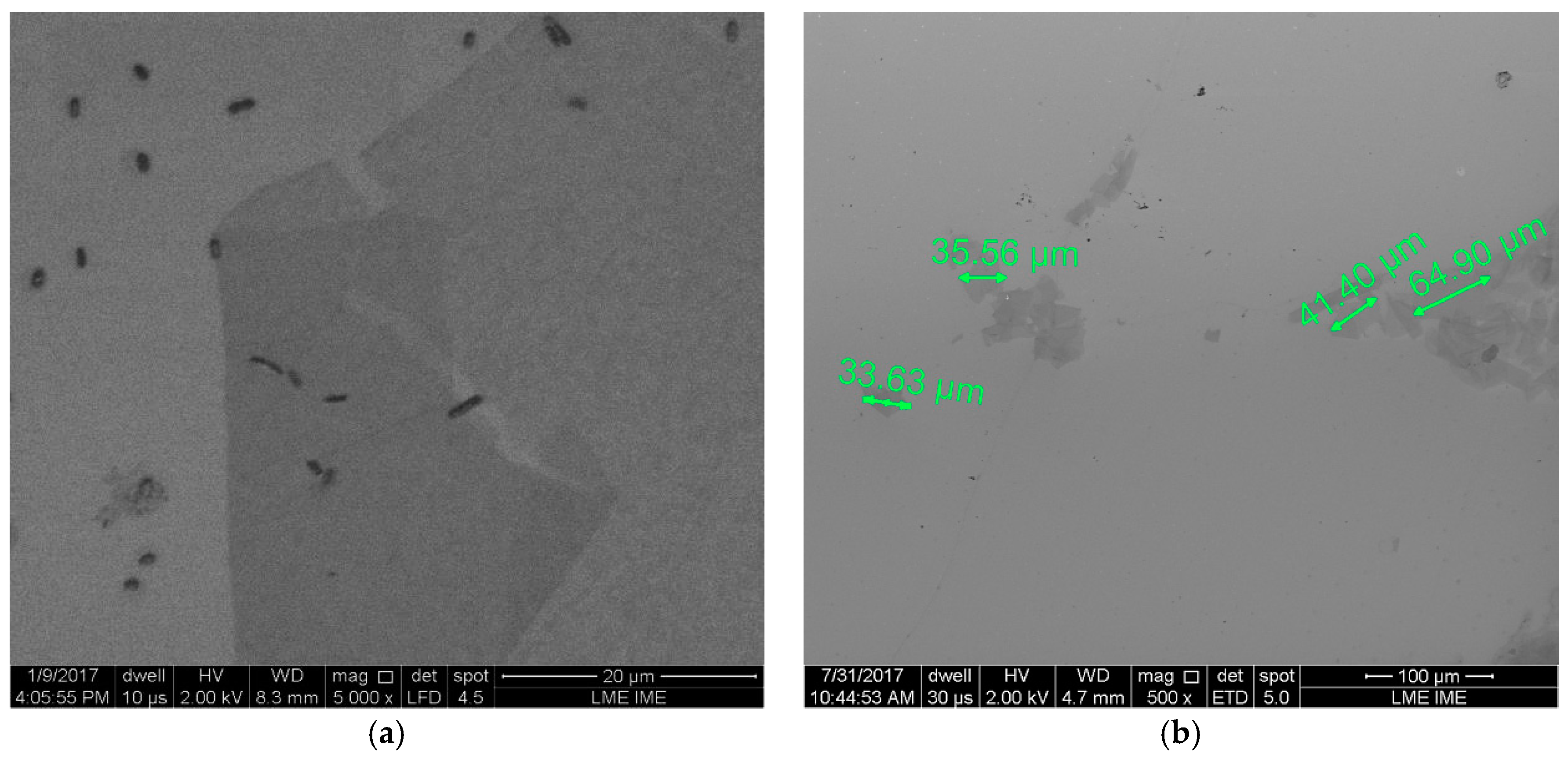
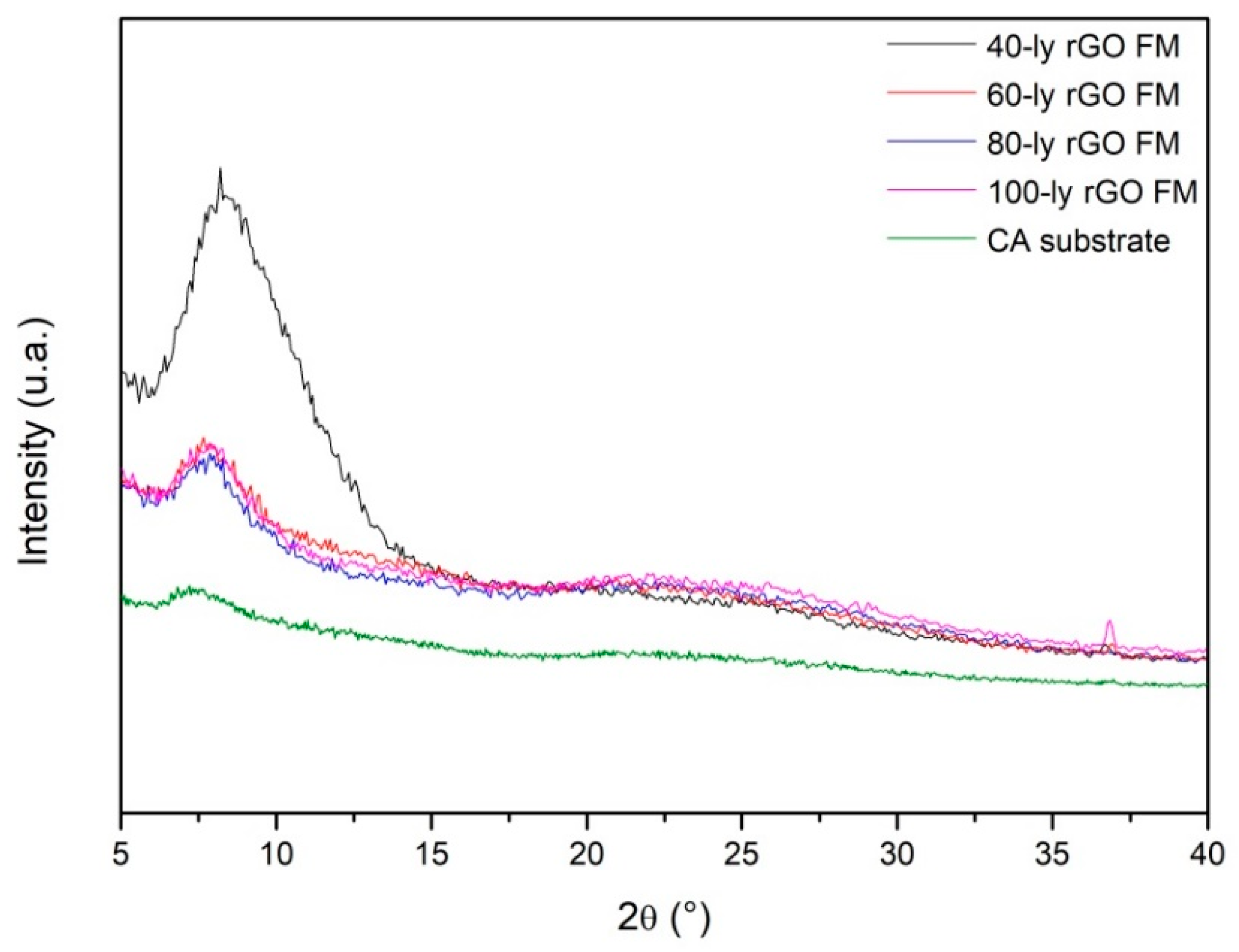


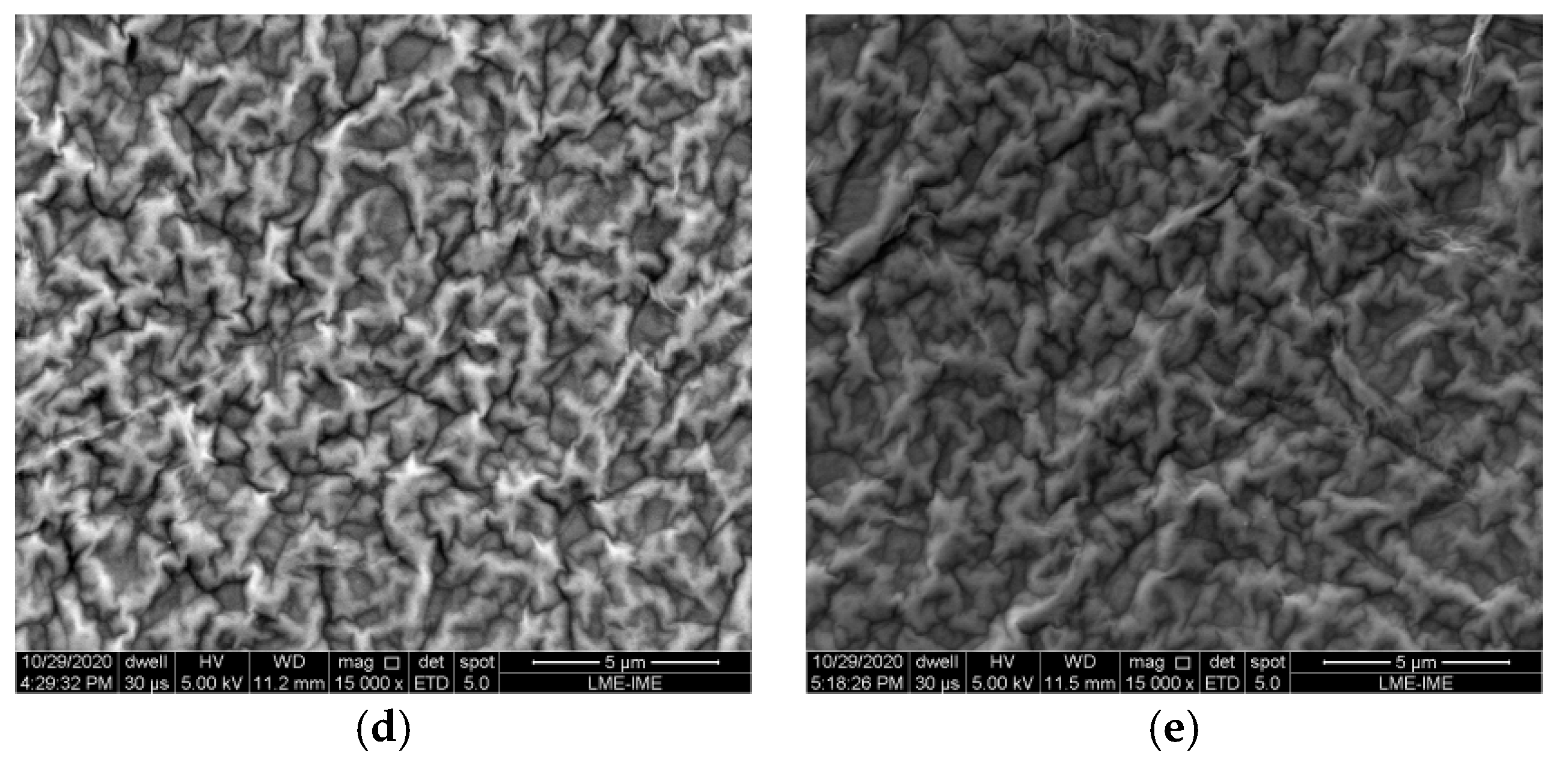
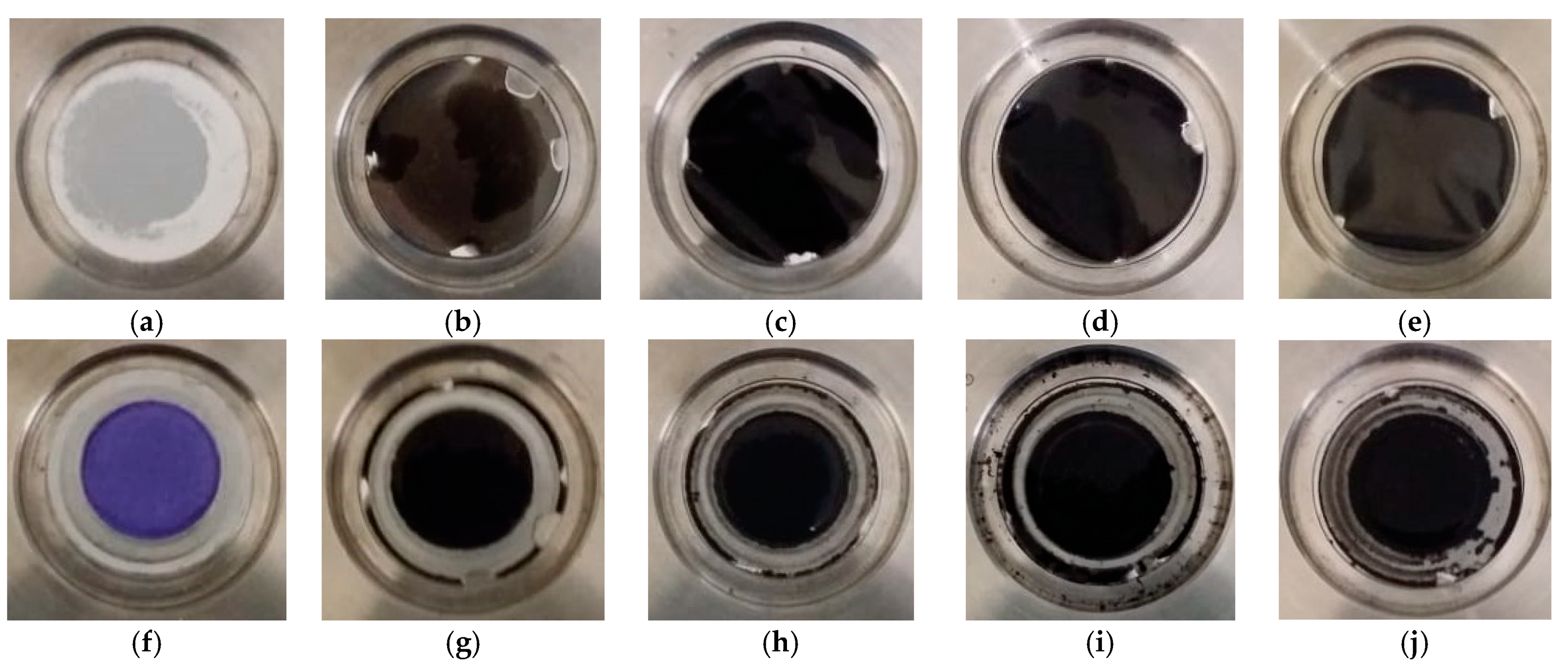

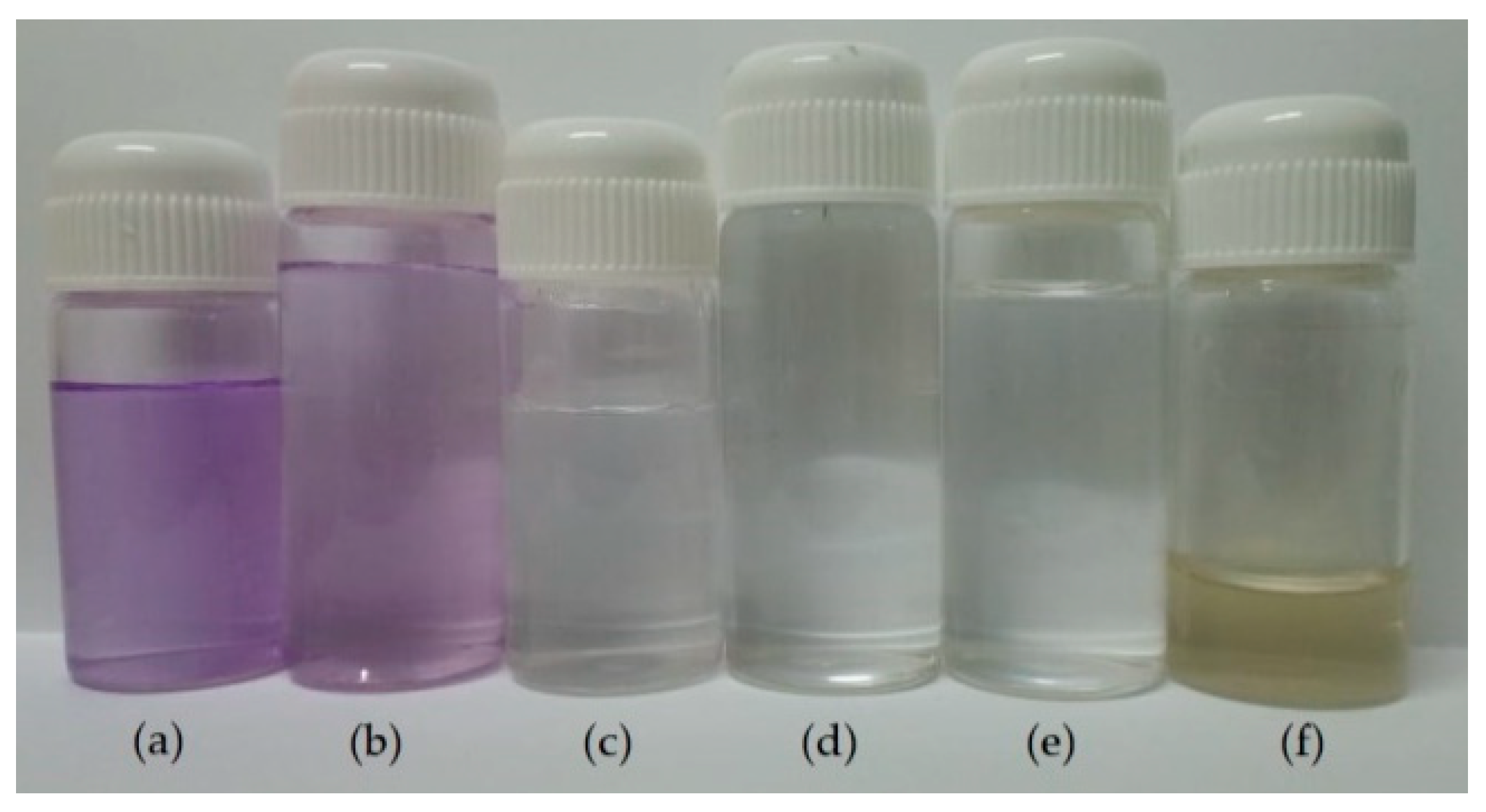
Publisher’s Note: MDPI stays neutral with regard to jurisdictional claims in published maps and institutional affiliations. |
© 2020 by the authors. Licensee MDPI, Basel, Switzerland. This article is an open access article distributed under the terms and conditions of the Creative Commons Attribution (CC BY) license (https://creativecommons.org/licenses/by/4.0/).
Share and Cite
Lima, A.; de Oliveira, A.; Demosthenes, L.; Sousa, T.; Pereira, A.; de Carvalho, R.; Anacleto, W. Reduced Graphene Oxide Filtration Membranes for Dye Removal—Production and Characterization. Mater. Proc. 2021, 4, 29. https://doi.org/10.3390/IOCN2020-07892
Lima A, de Oliveira A, Demosthenes L, Sousa T, Pereira A, de Carvalho R, Anacleto W. Reduced Graphene Oxide Filtration Membranes for Dye Removal—Production and Characterization. Materials Proceedings. 2021; 4(1):29. https://doi.org/10.3390/IOCN2020-07892
Chicago/Turabian StyleLima, Andreza, Anthony de Oliveira, Luana Demosthenes, Talita Sousa, Artur Pereira, Roberto de Carvalho, and Wagner Anacleto. 2021. "Reduced Graphene Oxide Filtration Membranes for Dye Removal—Production and Characterization" Materials Proceedings 4, no. 1: 29. https://doi.org/10.3390/IOCN2020-07892







